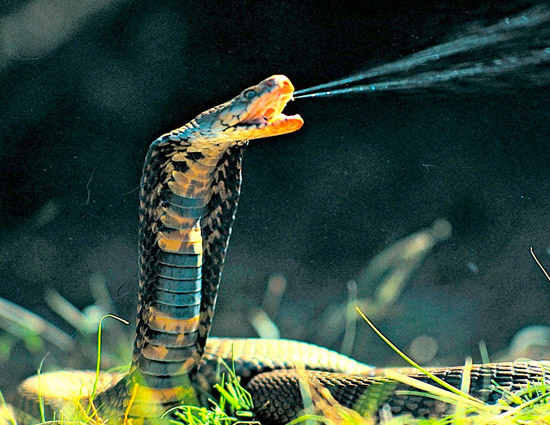

The Mamushi is Japan’s most dangerous snake; it is also found in Korea and China. It belongs to the pitviper family along with the rattlesnake and the American copperhead. It can grow up to 90 cms (3ft) long, but is usually smaller; nevertheless, it is highly dangerous due to its hemorrhagic venom, delivered through long, retractable fangs. It feeds mostly on fish, frogs and small mammals, and is viviparous.
These snakes (not true cobras) get their name from their striking coloration and ability to flatten their neck into a hood. They are found in Africa and are highly venomous, but have short fangs and poor eyesight due to their mainly burrowing lifestyle. Even so they should be avoided, for there is no known antidote for their bite. They feed on lizards and small mammals.
This interesting-looking viper is found in African rainforests. Its scales are keeled and give it a spiny or bristly appearance. This snake is highly venomous and there is no known antidote against its bite; antivenom used for other snake species bites have little or no effect in spiny tree viper victims. Therefore, this small (40-70 cms long, or 1.3-2.3ft) but dangerous snake should be treated with a lot of respect.
Perhaps one of the strangest snakes of all, this burrowing species found in Africa has fangs so long that they actually protrude out of the mouth, like saberteeth. This allows the snake to bite its prey without even opening its mouth. Small and with terrible eyesight, the burrowing asp is usually not deadly to adult humans but children have been known to die as the result of its bite.
Found in the Brazilian island of Queimada Grande, this pitviper evolved in a habitat where the only available prey were birds (the island has no native mammals); to prevent them from flying away, the golden lancehead developed an incredibly strong, quick acting venom. The island of Queimada Grande is the only place in the world where these pitvipers can be found; but their population is so dense that the island has been declared a restricted area by the Brazilian government. It is easily one of the most dangerous places in the world.